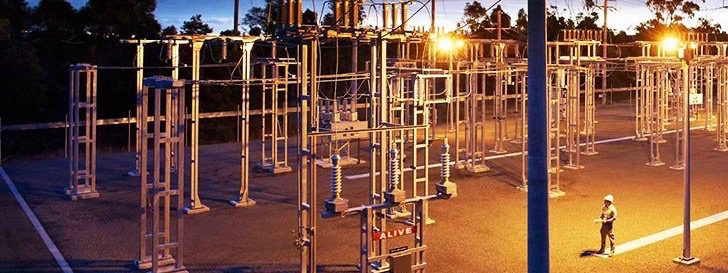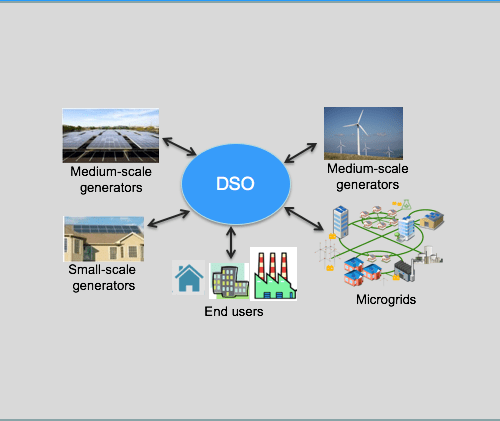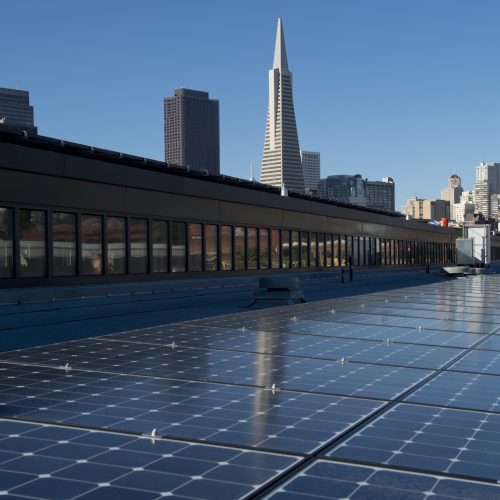Why Fire-Prone Communities Need Community Microgrids Now
This blog post explains the crucial need for Community Microgrids in fire-prone regions.
Read More
A new model whose time has come for modernizing our energy system.
The U.S. electric grid is at a crossroads. Originally designed to transport power from remote power plants to end-use customers, our centralized grid is being challenged by new technologies. Distributed energy resources (DER) like local renewables, energy storage, demand response, and energy efficiency are increasingly being deployed at the distribution level. This can overload and unbalance the grid.

Our outdated power grid is not flexible enough to allow for today’s complexity and is not resilient in the face of disasters, as has been highlighted by California’s severe fire seasons and Public Safety Power Shutoffs (PSPS).
Currently, our grid is managed at the macro level:

To move to a modern energy system, we must change both the utilities’ natural monopolies and how we manage the grid. We need more granular grid management for today’s reality. The utilities could take on this role as Distribution System Operators (DSOs).
Achieving this vision will require that utilities divest from their transmission assets and embrace the full range of distribution-level services. This will force utilities to become fierce innovators focused on achieving maximum value from DER and the distribution grid.

A DSO would operate and maintain each local distribution area, separate from the transmission operator, and would be responsible for providing reliable real-time distribution service.

Utilities, which already perform many of the functions of a DSO, are uniquely positioned for the DSO role — which would give them the opportunity to shift to a successful business model and remove their current conflict of interest with DER.
Read our Utility Dive op-ed on how to protect California ratepayers, expand clean local energy, and avoid bailing out PG&E — by divesting utilities of their transmission assets.

DSOs can manage and coordinate the electric system at a more granular level — coordinating the distributed generation coming into the grid, coordinating demand response, and managing microgrids.
This lets the grid handle more clean energy coming in, helps regulators and system operators maintain reliability and power quality, and may help remove resistance to wide-scale deployment of DER.

DSOs can provide incentives for distributed energy generation, such as rates and programs that better reflect benefits and costs of distributed energy, financial incentives to reshape demand on the system, and compensation to small energy generators for providing location-specific services to distribution grid.
This provides new avenues for distributed energy generators to get meaningful value for the full range of services they supply, and incentivizes more DER.

DSOs can create a market for wholesale distributed generation by aggregating DER and connecting DER to markets that provide new revenue opportunities.
This creates an opportunity to strategically locate mid-sized clean energy projects, a currently underused resource, and reduces the need for new large-scale generation, which saves money and keeps the benefits of clean energy in the community.
The Clean Coalition has been advocating for the DSO model in a number of venues; see links at left for details.

Read more about the DSO model at the links at the right.

The latest in clean local energy
Learn about our innovative projects and initiatives on our blog, and see what others are reporting about our important work.
This blog post explains the crucial need for Community Microgrids in fire-prone regions.
Read MoreRedwood Energy reports on Clean Coalition’s expert commentary, warning that AB 942 threatens rooftop solar affordability and undermines the clean‑energy transition
Read articleThis Clean Coalition hosted webinar took place on 27 June 2025 at 10:00 AM PST.
Read More